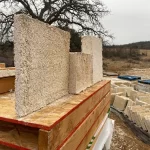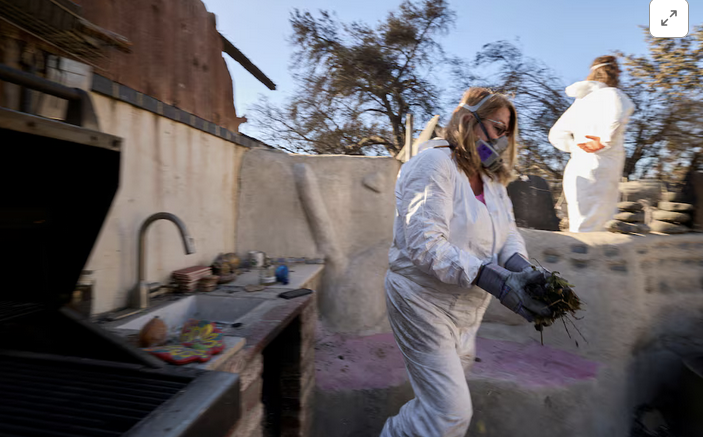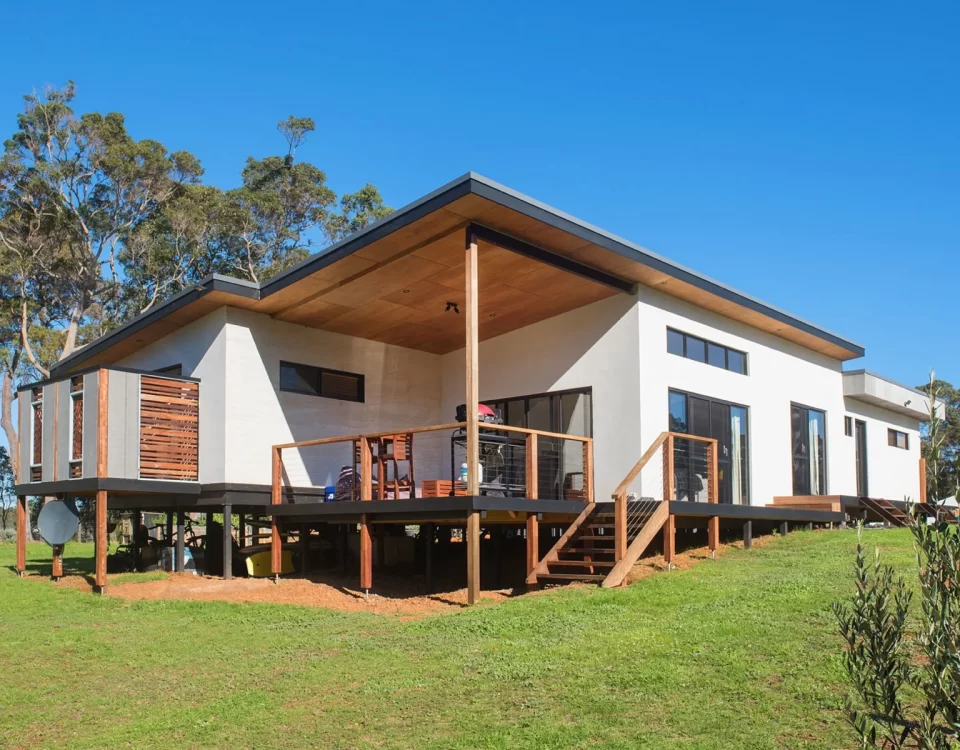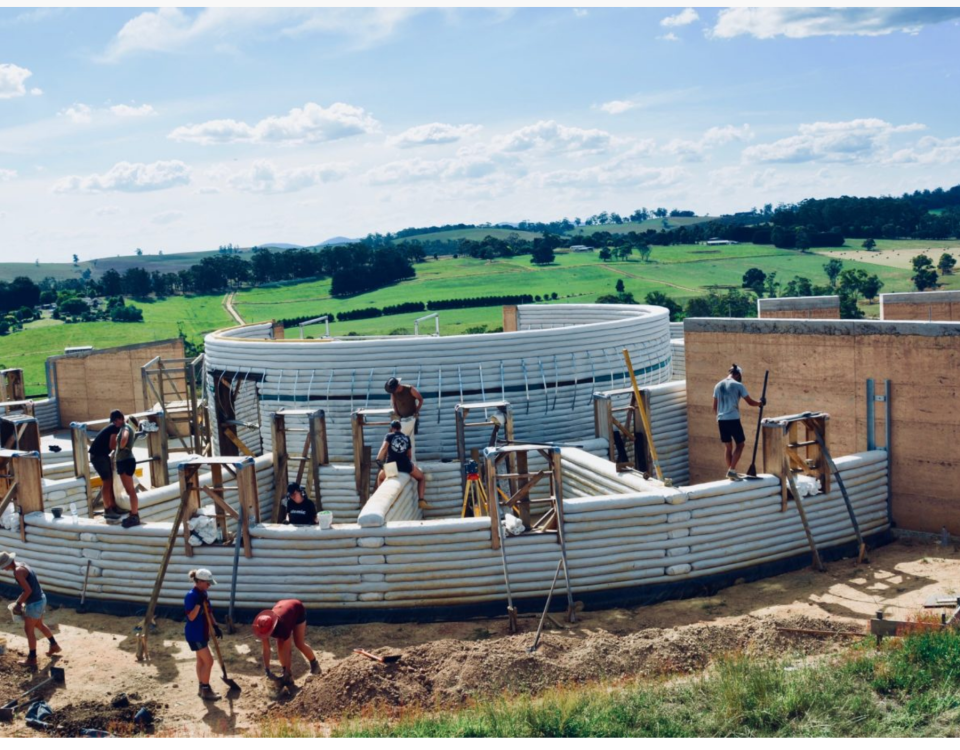
10 Tips for Lowering the Cost of Your Build – Mastermind Blog Share
03/12/2024
Hemp Wool vs Hempcrete – what’s the difference and how can it be used?
14/02/2025Los Angeles wildfires spark interest in adobe, natural building materials | Reuters
As the devastating wildfires in California, particularly in the Los Angeles area, continue to grow in frequency and intensity, the need for fire-resistant, climate-resilient homes has never been more urgent.
Wildfires have become an annual crisis, with communities facing the constant threat of destruction. In this context, sustainable building materials such as cob, light straw-clay, and hemp-lime are gaining attention not only for their environmental benefits but also for their fire safety, low carbon footprints, and seismic resilience.
These natural materials provide an opportunity to build homes that are safer, more durable, and better suited to the challenges posed by both wildfires and earthquakes, two of California’s most pressing concerns. As the state grapples with the intersection of climate change, urban sprawl, and increasing fire danger, it’s clear that embracing these innovative materials can help mitigate the risks of catastrophic events while supporting a more sustainable future.
Fire Resistance: A Key Advantage in the Age of Wildfires
With seasonal wildfires becoming a growing concern, fire resistance has moved to the forefront of building design. Cob, a mixture of clay, sand, and straw, has earned impressive fire-resistance ratings, including a two-hour fire-resistance rating through ASTM E119 testing. This means cob walls can stand up to intense heat for two hours, offering critical protection in areas prone to wildfires.
Other natural materials, like light straw-clay and hemp-lime, are naturally fire-resistant thanks to their required plaster finishes. These materials, which bind straw or hemp with lime, create a solid, fire-resistant structure without needing additional fireproofing treatments. In areas like Los Angeles, where fire risk is a constant concern, these materials offer an essential layer of protection.
Climate Benefits: Low Carbon and Carbon Sequestration
Building with natural materials isn’t just good for fire safety; it’s also better for the environment. Materials like straw, clay, hemp, and lime are not only low in embodied carbon, but they also have the potential to sequester carbon over their lifetime. Hemp-lime, for instance, has an impressive carbon sequestration ability, drawing in CO2 from the atmosphere as it grows and binding it into the material as it cures.
As the construction industry looks for ways to reduce its carbon footprint, these materials stand out as climate-beneficial options that help lower greenhouse gas emissions from the outset. By utilizing locally sourced and rapidly renewable materials, builders can contribute to a more sustainable and resilient built environment.
Seismic Safety: Proven Performance in Earthquake Zones
California is no stranger to seismic activity, and building for seismic safety is a major concern in earthquake-prone regions like Los Angeles. While cob has long been associated with durable, earthquake-resistant structures, it is important to understand how these natural materials hold up under seismic forces.
Cob construction has undergone rigorous testing, including reverse cyclic in-plane and out-of-plane testing in university settings, proving that it can perform well in seismic conditions. Additionally, for light straw-clay and hemp-lime, adjustments to the International Residential Code (IRC) for lateral force-resisting systems ensure that these materials meet seismic safety standards. These systems are prescriptively allowed in Seismic Design Categories A, B, and C, with engineered designs required for Seismic Design Category D.
Multiple California civil engineers and FEMA representatives have reviewed these systems, offering valuable insights that have helped refine these materials’ performance in seismic zones. As such, builders can confidently use these materials in earthquake-prone regions, with proper engineering and design protocols in place.
Supporting Safe and Permitted Use
One of the challenges with sustainable building systems is ensuring they are used properly and safely. In some cases, citizens may attempt to build with natural materials like cob or hemp-lime without the necessary permits, often due to difficulties navigating complex permitting processes.
It’s crucial to ensure that these building systems are used safely through plan checks and inspections, particularly in regions with strict building codes. Working with local authorities and engineers can help overcome permitting obstacles and ensure that natural building systems are properly integrated into the built environment.
Locally Sourced, Low-Cost, and Biodegradable Materials.
Another significant benefit of natural building materials is their accessibility and low cost. Many of these materials—such as straw, clay, and hemp—can be sourced locally and are often more affordable than traditional building materials. They also come with the added advantage of being biodegradable, which reduces their environmental impact at the end of their life cycle.
Hemp-lime (or hempcrete) in particular has seen a surge in popularity since the legalization of hemp cultivation in the U.S. in 2018. This rapidly growing industry is helping meet the demand for sustainable, bio-based materials and is poised to make a big impact in the construction world.
Removing Barriers to Greater Adoption
While natural building materials have immense potential, there are still barriers to widespread adoption. Overcoming these barriers means addressing permitting challenges, ensuring proper training for builders, and creating pathways for mainstream acceptance of materials like cob, straw-clay, and hemp-lime.
By educating communities, engineers, and regulators about the proven benefits of these materials and promoting their use in building codes and design standards, we can help unlock the full potential of sustainable, natural building practices. The more we incorporate these materials into mainstream construction, the more we can reduce our carbon footprint, improve fire and seismic safety, and create homes that are healthier for both people and the planet.
Conclusion: A Future Built on Natural Materials and the Australian context
As we face an uncertain future shaped by climate change and environmental risks, it’s clear that natural building materials have a crucial role to play in creating safer, more sustainable homes. From their fire-resistant qualities to their low carbon footprint and seismic safety, materials like cob, light straw-clay, and hemp-lime provide a reliable, eco-friendly alternative to conventional building systems.
In fire-prone regions like Los Angeles, these materials can provide much-needed protection from wildfires, while in seismic zones, they offer a solid foundation for earthquake-resistant structures. By embracing these materials and removing obstacles to their widespread use, we can create a more resilient, sustainable built environment—one that works with nature rather than against it. Let’s continue to explore, innovate, and invest in building practices that not only meet our current needs but also ensure a healthier, more sustainable future for generations to come.
The importance of fire-resistant, climate-resilient building materials is not limited to the U.S. In Australia, where bushfires have become a frequent and devastating occurrence, the need for safer building solutions is also critical. New South Wales, Victoria and now parts of queensland have seen firsthand the destruction that bushfires can cause, and the increasing frequency of these fires—exacerbated by climate change—has prompted urgent calls for more sustainable and fire-safe building practices.
Natural materials like cob, light straw-clay, and hemp-lime could play a vital role in these areas as well, providing homes with inherent fire resistance while also reducing the overall carbon footprint of construction. By incorporating such materials into new housing projects and retrofitting existing homes, Australia can move toward a future where homes are not only better equipped to withstand bushfire threats but also contribute to a healthier, more sustainable built environment. Just as in the U.S., the adoption of these materials could be key to mitigating the impacts of climate change and building more resilient communities across Australia.
Check out this article on the recent rise in interest in Adobe building since the LA wildfires occurred in early January.





